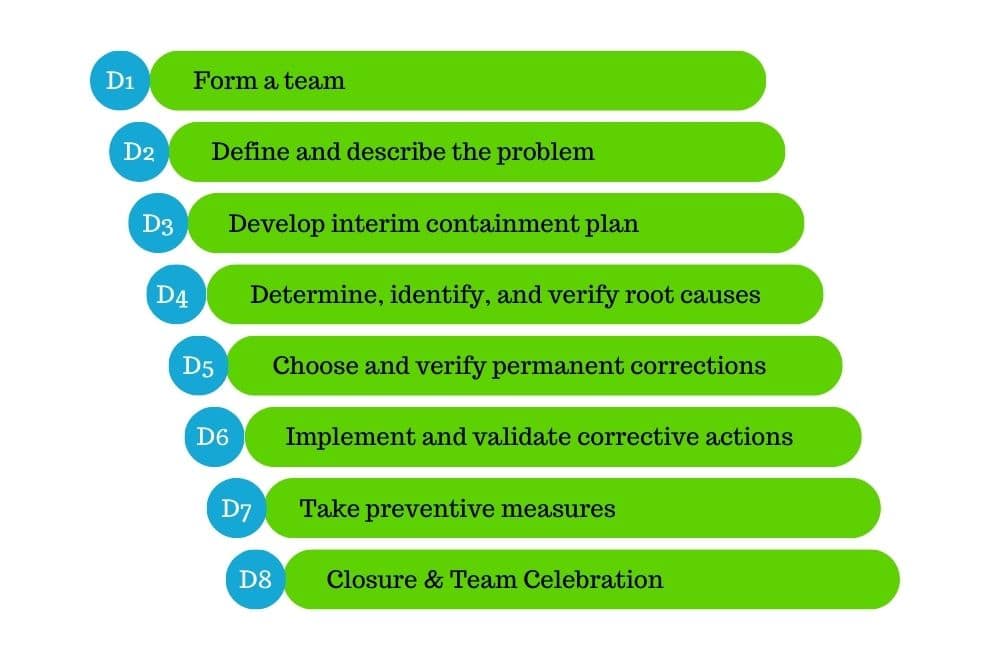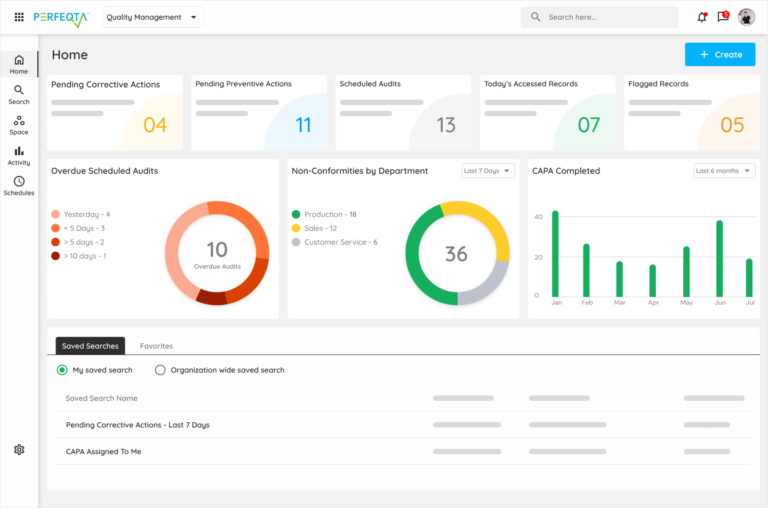Mastering 8D Problem Solving: A Comprehensive Guide
Are you tired of dealing with recurring problems and issues in your organization?
Are you looking for a comprehensive problem-solving approach that can help you tackle these challenges head-on?
Look no further! In this blog, we will guide you through the process of mastering 8D problem-solving.
From understanding the LEAN 8D methodologies to exploring the eight disciplines of problem-solving, we will cover it all.
You will also learn when to use the eight disciplines for problem-solving and how to apply them effectively in your organization.
Additionally, we will discuss the benefits of implementing 8D problem-solving and provide you with valuable insights on the prerequisites for successful implementation.
Get ready to enhance your problem-solving skills and take your organization to new heights with this comprehensive guide.

LEAN 8D Methodologies
Lean 8D methodologies, widely adopted in different industries, provide a structured problem-solving approach.
These methodologies consist of eight distinct steps, including defining the problem, forming a team, and taking necessary corrective actions.
The LEAN 8D process leverages unique tools and techniques tailored to each step, facilitating efficient problem analysis and resolution.
Emphasizing root cause analysis and preventive measures, LEAN 8D methodologies aim to prevent future occurrences of similar problems.
By implementing the LEAN 8D process, organizations can enhance their problem-solving capabilities and drive continuous improvement.
Eight Disciplines of Problem-Solving (8D)
The Eight Disciplines of Problem Solving (8D) is a structured methodology that guides individuals and teams through the process of resolving complex issues.
It consists of eight steps that provide a comprehensive approach to problem-solving.
The first step involves forming a team and cultivating a problem-solving mindset.
By bringing together individuals with different expertise and perspectives, the team can tackle the problem collaboratively.
Defining the problem clearly and understanding its impact on the organization is crucial during this phase.
Once the problem is defined, the next step is containment and prevention.
Temporary solutions or measures are implemented to minimize the problem’s impact and prevent further issues from occurring.
The third step focuses on identifying the root cause(s) of the problem.
Techniques like fishbone diagrams or 5 Whys analysis are used to dig deeper into the underlying causes.
After identifying the root cause(s), the team develops and implements interim containment measures.
These measures address immediate concerns until permanent corrective actions can be implemented.
The final step involves verifying root causes and implementing permanent corrective actions.
Thorough analysis is conducted to ensure the root cause(s) are addressed effectively, preventing the recurrence of the problem.
Throughout the 8D problem-solving process, stakeholder involvement, a team-oriented approach, and emphasis on preventive measures are crucial.
These methodologies contribute to improving problem-solving capabilities and driving continuous improvement initiatives.
The LEAN 8D Problem-Solving Format
The LEAN 8D problem-solving format is a structured approach that enables organizations to analyze and solve problems effectively.
It consists of five essential steps: Define, Describe, Develop, Decide, and Deploy. In the Define step, the problem and its impact on the organization are clearly defined.
Gathering relevant data and providing a detailed problem description are the key aspects of the Describe step.
Analyzing the root cause of the problem and developing potential solutions are the focus of the Develop step.
Evaluating these solutions and determining the best course of action fall under the Decide step.
Finally, in the Deploy step, the chosen solution is implemented and monitored for effectiveness.
When to Use the Eight Disciplines for Problem-Solving
The Eight Disciplines (8D) problem-solving methodology is a powerful tool used in industries such as automotive, manufacturing, and healthcare to identify, analyze, and solve complex problems.
It is particularly effective for recurring issues or those that have a significant impact on customer satisfaction, quality, or safety.
The 8D process follows a systematic approach and requires a team-based effort, making it a valuable method for problem-solving.
By following the eight disciplines outlined in the process, organizations can effectively address the root causes of problems, develop interim containment measures, and implement permanent corrective actions.
This methodology can be used to remedy a variety of problems, including product defects, process failures, customer complaints, and supplier challenges.
Application of 8D Problem Solving
The application of the 8D problem-solving methodology is widely recognized in various industries, including automotive, manufacturing, engineering, healthcare, and customer service.
It is a systematic approach that involves eight disciplines, ranging from problem definition to the implementation of permanent solutions.
By effectively identifying the root cause of a problem and developing efficient countermeasures, organizations can prevent the recurrence of similar issues in the future.
The 8D problem-solving method promotes teamwork, communication, and data-driven decision-making, enabling continuous improvement within an organization.
With its focus on problem analysis, problem description, root cause verification, and action planning, the 8D process ensures a structured and comprehensive problem-solving approach.
Plan and Prepare for the 8D
Effective planning is crucial for achieving a successful start.
It is highly recommended to seek the insights of experts prior to commencing the 8D analysis.
Before assembling a team, it is imperative to obtain feedback and gather information regarding the symptoms.
D1: Form a team –
Choose and form a group of individuals who possess knowledge about the product or process.
D2: Define and describe the problem –
To address the problem, provide a clear description of the individuals involved, the issue itself, the location, the time frame, the reasons behind it, and the methods or factors contributing to it (5W2H).
D3: Develop interim containment plan; implement and verify interim actions –
Develop and execute measures to contain and separate the issue from all customers.
D4: Determine, identify, and verify root causes and escape points –
Please determine all possible causes that could provide an explanation for why the problem arose.
Additionally, please explain why the problem went unnoticed when it initially occurred.
It is crucial that all causes are verified or proven rather than relying on speculative brainstorming.
Utilizing techniques such as the 5 Whys and cause and effect diagrams can help map out the causes in relation to the identified problem or effect.
D5: Choose and verify permanent corrections (PCs) for problem/nonconformity –
By utilizing preproduction programs, it is essential to validate quantitatively that the chosen correction will effectively solve the issue for the customer.
D6: Implement and validate corrective actions –
Develop and execute the most effective corrective measures (CA).
D7: Take preventive measures –
Revise the management systems, operation systems, practices, and procedures in order to avoid the repetition of this and any comparable issues.
D8: Closure & Team Celebration –
It is important to acknowledge the combined efforts of the team. The organization should express its gratitude to the team in a formal manner.
LEAN 8D and Root Cause Analysis (RCA)
Lean 8D, a problem-solving methodology derived from the Eight Disciplines (8D) approach, offers a unique combination of Lean principles and effective problem-solving techniques.
This method focuses on identifying the root cause of a problem rather than simply addressing the surface-level symptoms.
Root Cause Analysis (RCA), an integral component of Lean 8D, involves a systematic process of uncovering the underlying causes.
Tools such as fishbone diagrams, five whys analysis, and Pareto charts aid in the identification of the root cause.
Integrating Lean 8D with RCA allows organizations to successfully resolve complex problems and implement preventive measures to avoid future recurrence.
With Lean 8D and RCA, organizations can achieve continuous improvement and foster a culture of problem-solving and learning.
Usage of 8D Problem-Solving Methodology
The application of the 8D problem-solving methodology is crucial in effectively addressing and resolving complex issues.
This comprehensive methodology provides a structured and systematic approach to problem-solving, ensuring that all essential aspects are considered for a successful resolution.
Starting with problem identification and team formation, the 8D method focuses on root cause analysis to uncover the underlying factors contributing to the problem.
It emphasizes the collection and analysis of relevant data, enabling organizations to identify quantifiable terms and verify root causes.
By incorporating secondary key terms such as data collection, root cause analysis, and problem identification, the 8D problem-solving methodology offers a team-oriented and systematic approach to problem-solving, helping organizations achieve efficient and effective resolutions.
Benefits of Implementing 8D Problem Solving
– 8D problem solving is a structured approach to solving complex problems.
– It helps teams stay organized and focused on the root cause of the problem.
– It also helps to ensure that potential solutions are tested and implemented in an effective and efficient manner.
– 8D problem solving also helps to identify areas for process improvement so that similar issues can be prevented in the future.
– By following this approach, organizations can reduce costs by eliminating the need for repeat repairs or replacements.
Prerequisites for Successful 8D Problem Solving
Before initiating the 8D problem-solving process, it is crucial to meet certain prerequisites that lay the foundation for a successful resolution.
These prerequisites encompass a comprehensive grasp of the problem at hand, meticulous gathering and analysis of relevant data, and the assembly of a cross-functional team.
Facilitating open and efficient communication within the team is essential while adopting a structured approach like the 8D methodology ensures methodical and thorough problem-solving.
Moreover, cultivating a supportive organizational culture that fosters learning from past failures and advocates continuous improvement plays a pivotal role in achieving successful 8D problem-solving.
Problem-Solving Tools for 8D Methodology
8D Problem-Solving Tools include:
– The 7 Steps of the 8D Methodology are to Define, Describe, Develop Containment Actions, Determine the Root Cause, Develop and Implement Permanent Corrective Actions, Verify the Effectiveness of Actions, and Prevent Recurrence.
– Fishbone Diagrams or Cause and Effect Diagrams to help identify potential root causes.
– Failure Mode and Effects Analysis (FMEA) to determine the risk of potential failures.
– Pareto Charts to prioritize corrective actions.
– Control Plans for process improvement.
Frequently Asked Questions
Conclusion
Mastering 8D problem-solving is crucial for organizations looking to improve efficiency, productivity, and customer satisfaction.
By following the LEAN 8D methodologies and implementing the eight disciplines of problem-solving, you can effectively identify and address issues within your organization.
Whether you’re new to 8D problem-solving or looking to enhance your skills, our comprehensive guide provides all the information you need.
To learn more about how to master 8D problem-solving and drive success in your organization, sign up for a free consultation with our experts today.


